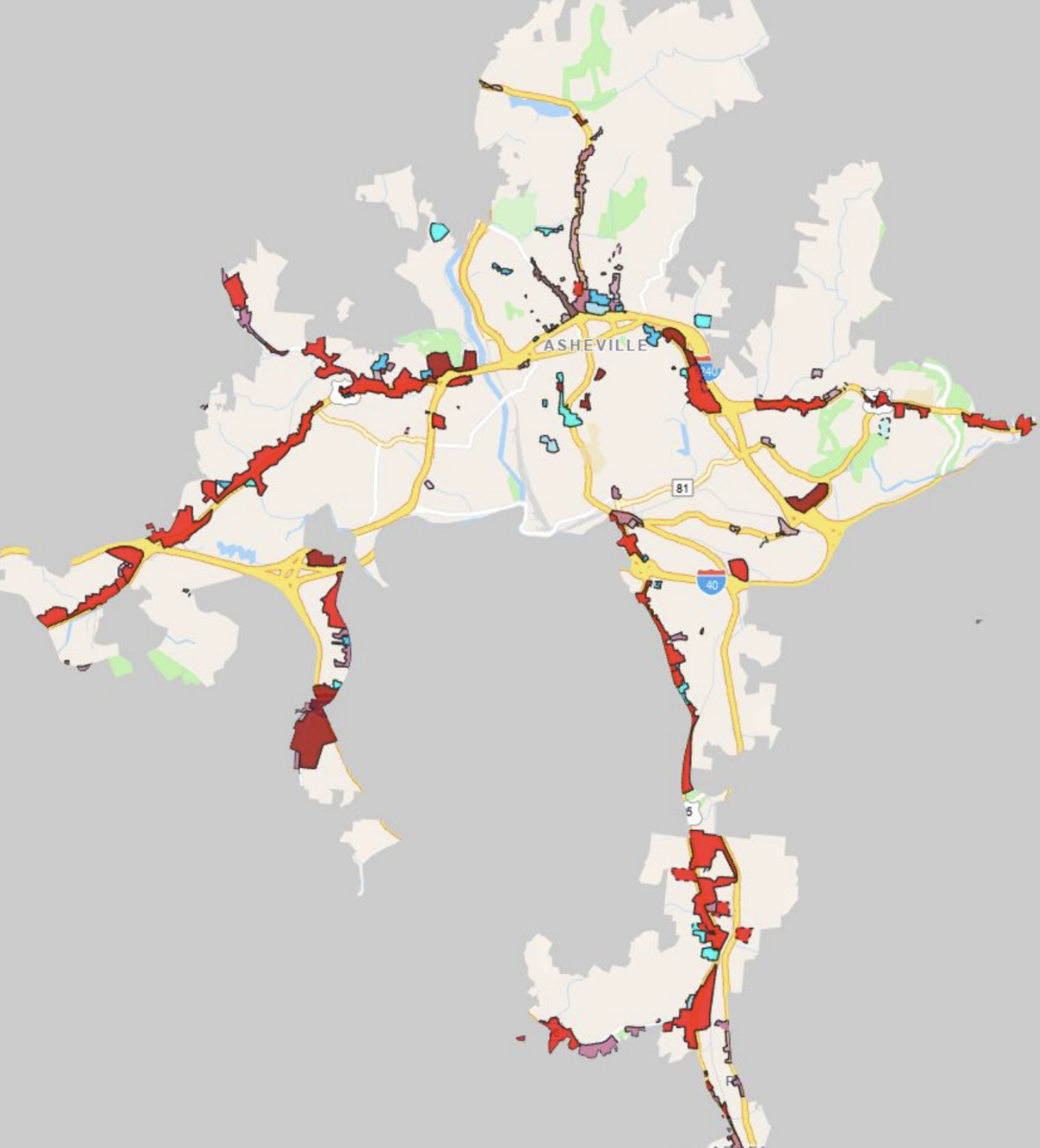Asheville Planning and Zoning Commission - January Meeting
January 28, 2025
Here’s what we found to be the most important housing-related items at Asheville’s Planning and Zoning Commission meeting of Wednesday, January 22, 2025.
Sweeten Creek Road Housing Project
A conditional zoning request for 3183 Sweeten Creek Road was approved. This project will bring more than three hundred apartments to the area.
Find out more from the slide presentation that city staff delivered on Wednesday.
👍 This conditional zoning request was approved by the Planning and Zoning Commission.
Three Zoning Text Amendments
The main event of the night was a bundle of three zoning text amendments—that is, revisions to the city’s Unified Development Ordinance (UDO), which is the code that shapes how the city grows and changes.
These amendments were all designed to promote more housing supply on the city’s “commercial corridors,” which are, generally speaking (though not always), synonymous with what the city calls “transit-supportive corridors.”

(We might think about “commercial corridors” as contrasted with two other categories: the “central business district” or downtown, on one hand, and the “neighborhoods,” which are zoned as “residential” and where you find mostly single family homes, on the other.)
City staff from the Urban Planning and Design Department gave a presentation to place these three code revisions in a greater context, and suggested that following the passage of these amendments, the staff would then turn its attention towards the “neighborhoods” in order to increase the potential for housing supply there.
The three zoning text amendments were as follows:
1. Project Thresholds
The UDO as it exists attaches some extra barriers to larger residential projects, even when those projects conform to the existing zoning rules for their respective site. Perhaps the most burdensome barrier is that if any proposed development includes more than 49 homes, Asheville City Council must vote to approve it.
This proposed revision seeks to bump up the “threshold” from 49 homes to 100,000 square feet. (The switch in measurement, from number of homes to square footage, is technical but it makes a lot of sense, and may encourage a greater variety of apartment sizes.)
The revision also includes a number of beneficial changes for smaller developments. You can find all of those changes outlined in the city staff presentation from Wednesday.
Asheville For All expressed its support for these updates.
At the same time, we expressed some concern over the terms by which projects with more than 100,000 square feet of residential floor space would be approved for “by right” permitting. You can read about those concerns in our written public comment here.
👍 The revisions were approved by the Planning and Zoning Commission.
2. Parking Requirements
The second proposed revision has to do with parking mandates. These minimums on the number of parking spaces that any new building needs to include are expensive for builders and incentivize sprawl rather than infill. The revision will eliminate costly parking mandates in the commercial corridors shown on the above map, for most uses, including residential, retail, and office.
Asheville For All expressed its support for these updates.
At the same time, we lamented the piecemeal approach to parking reform, particularly as the city’s 2023 Missing Middle Housing Study as well as the Affordable Housing Plan from last September both point to the need for more comprehensive and ambitious reform here. While we acknowledge that the city has decided on a phased approach as described above—where changes to residential neighborhoods will have to follow the completion of commercial corridor UDO reforms—we do not believe that it is in the interests of the city, nor its cash-strapped renters and first-time homebuyers to continue to delay reforms that will unlock more of the city’s core areas to infill housing.
Again, you can read more about these concerns in our written public comment.
👍 The revisions were approved by the Planning and Zoning Commission.
3. Commercial Zoning District Updates
The third of the three UDO revisions promotes more housing and “mixed use” buildings in commercial areas by eliminating residential density limits. The different commercial districts still have limits on how much retail or office space can be built, but not for housing, so this will incentivize a better mix of uses.
These updates also allow buildings to be built closer to the sidewalk, which makes more development feasible, and they incentivize parking to be placed to the side or in back of buildings, rather than in front. You can see more about these changes in the presentation slides that city staff delivered on Wednesday.
Asheville For All expressed its support for these updates.
👍 The revisions were approved by the Planning and Zoning Commission.
What’s Next?
As of this writing, the three zoning text amendments appear on the Asheville City Council’s agenda for February 11th as tentative items, where they will need to be approved by the council in order to take effect. In the meantime, the city has scheduled some “public information” sessions.
The Sweeten Creek Road project is tentatively scheduled for February 25th.
And the broader, more comprehensive changes that we mentioned earlier? Their appearance on City Council or Planning and Zoning agendas is still TBD.
Concluding Notes
Some of the above UDO reforms were quite unique, in that they were initiated by the Planning and Zoning Commission, and sent to the city staff, before they were then polished by city staff and sent back to the commission for a vote.
It’s exciting to have a Planning and Zoning Commission that wants to be proactive in making Asheville a more livable and equitable place. We send big thanks their way.
Thanks also to city staff for their work on these reforms—we do believe that they will make a difference in bringing more housing to our transit supportive roads. And we especially hope that they will bring more homes to our more high-demand, high-amenity corridors like Merrimon Avenue.
And finally, thanks to our members who came out to speak on the importance of the three zoning text amendments as well as the urgency for further and more comprehensive UDO reform.
